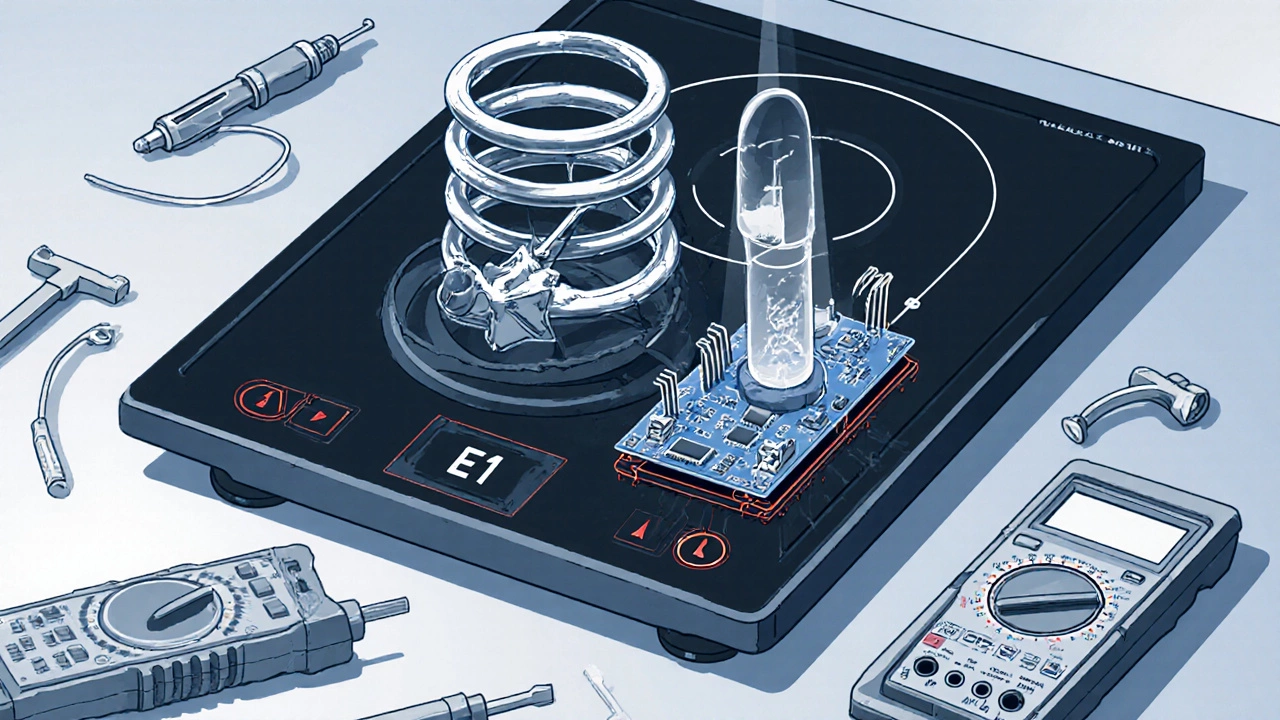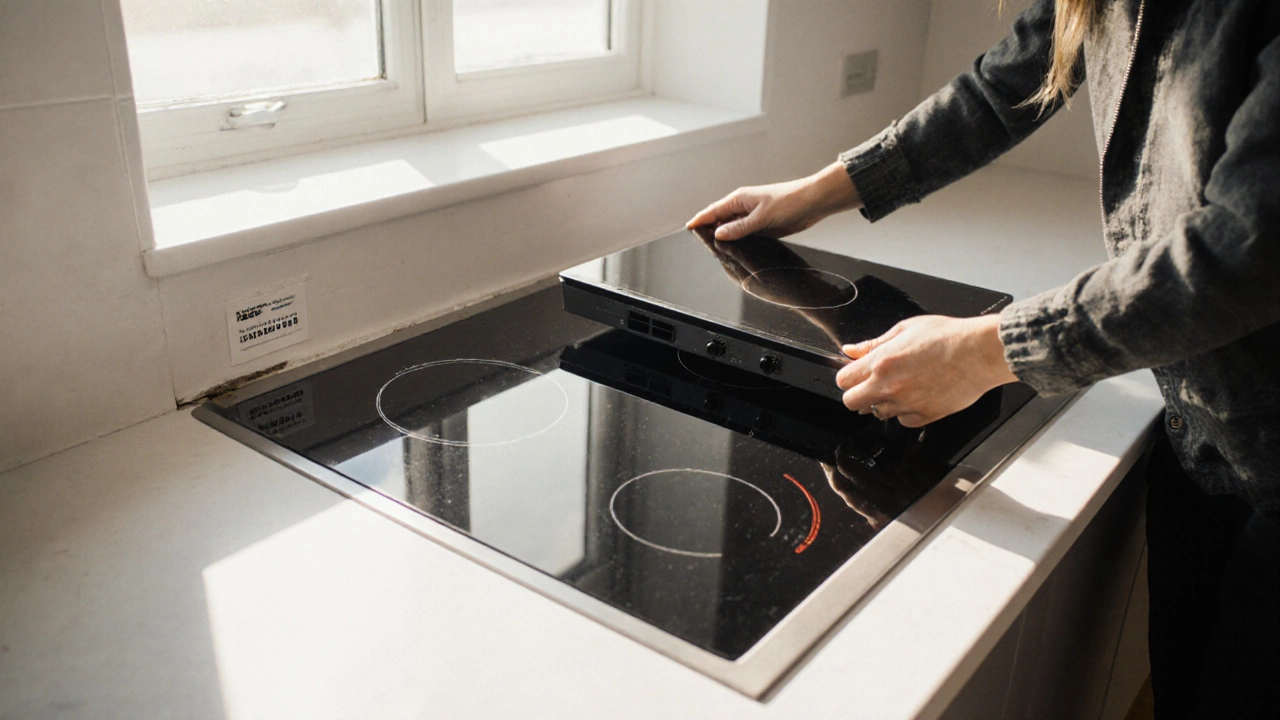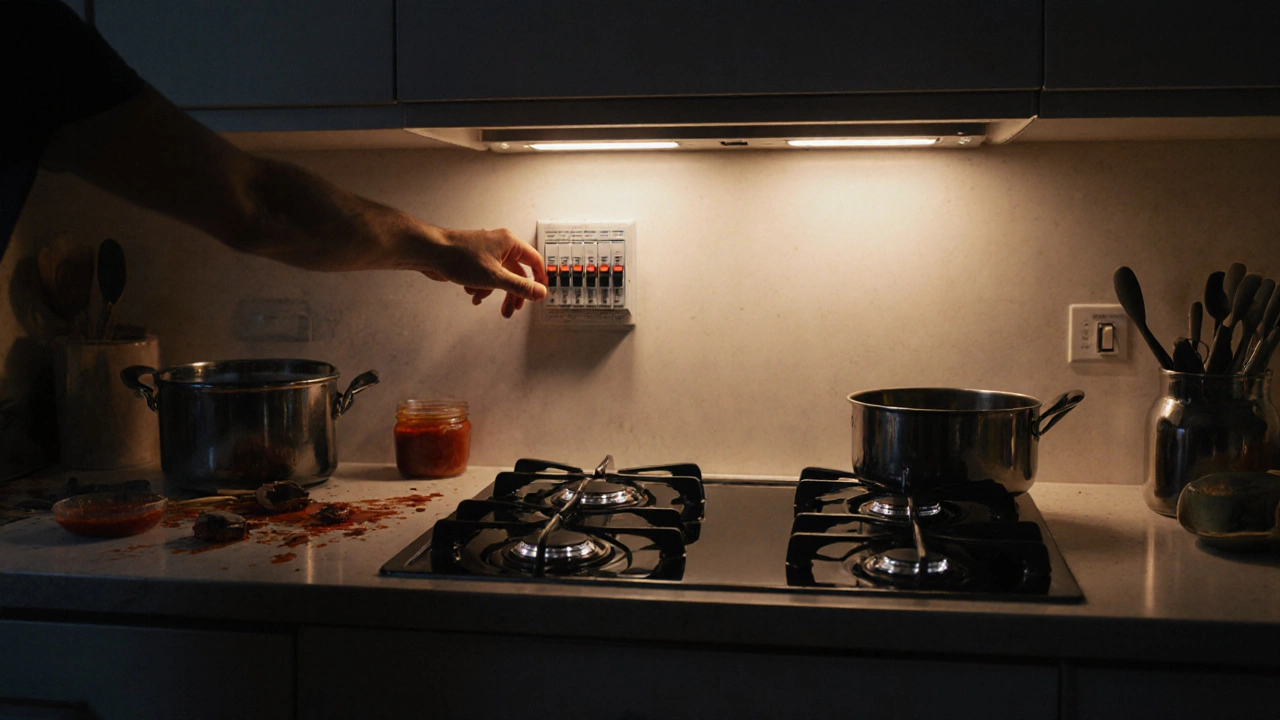Electric Hob Troubleshooter
Diagnose Your Electric Hob Problem
Answer a few simple questions to identify the issue and get a solution.
Diagnosis Result
If your electric hob suddenly stopped working, you’re not alone. It’s one of the most common kitchen emergencies - especially in New Zealand homes where electric hobs are everywhere. One minute you’re boiling pasta, the next, nothing. No heat, no lights, no beeps. It’s frustrating, and it feels like your whole day is stuck. But before you call a technician or start shopping for a new cooktop, there are a few simple things you can check yourself. Most of the time, it’s not a broken element or a wiring disaster. It’s something small, cheap, and easy to fix.
Check the power first - it’s usually the culprit
Start with the most obvious thing: is the hob getting power at all? Don’t assume the outlet or circuit is fine just because your toaster or kettle is working. Electric hobs often run on a dedicated 240V circuit, separate from regular sockets. Head to your fuse box and look for a tripped circuit breaker. It’ll be in the ‘off’ position or somewhere between on and off. Flip it back on. If it trips again right away, stop. That’s a sign of a serious fault - call an electrician. If your home has a fuse box instead of circuit breakers, check for a blown fuse. Look for a glass cylinder with a broken wire inside. Replace it with the exact same amperage rating. Never use a higher-rated fuse - it’s a fire risk. Also, check if your hob has a built-in power switch. Some models have a small on/off button on the front or side. It’s easy to miss. I’ve seen people spend hours troubleshooting when all they needed was to flip a switch they didn’t know existed.Test the individual zones
If the hob lights up but one or more burners won’t heat, you’re likely dealing with a failed element or a faulty connection. Induction hobs are especially tricky because they don’t glow like old coil hobs. If the zone shows a symbol on the control panel but doesn’t heat, the issue is internal. Try this: turn on a different zone. If it works, the problem is isolated to one element. If none work, the issue is probably with the control board or main power supply. For coil-style hobs, you can visually inspect the element. If it’s cracked, blistered, or has dark burn marks, it’s dead. For induction hobs, you can’t see the coil, but you can test it with a multimeter if you’re comfortable with electronics. Look for infinite resistance - that means the coil is broken. Don’t try to replace the element yourself unless you’ve done it before. The wiring is high-voltage and often requires removing the entire cooktop. One wrong move and you risk electrocution or damaging the control board.Check the child lock or safety mode
Many modern electric hobs have a child lock feature. It’s designed to prevent accidental activation, but it’s also easy to trigger by accident. If your control panel is lit up but won’t respond to touches, the lock might be on. The way to unlock it varies by brand. On Bosch, it’s usually holding the lock button for 3-5 seconds. On Smeg, it’s a combination of two buttons. On Indesit, it’s the ‘+’ and ‘-’ buttons held together. If you’re not sure how to unlock yours, look up your model number online. Most manufacturers have a PDF manual available. Just type in your brand + model number + ‘user manual’ and you’ll find it. Don’t guess - forcing buttons can damage the control panel.
Look for error codes
Modern hobs don’t just go dark - they talk to you. If your hob has a digital display and suddenly shows an error code like E1, F2, or H9, that’s not random. These codes point to specific problems. E1 often means a temperature sensor fault. F2 usually means a power supply issue. H9 could mean overheating. Write down the code. Then search for your brand and model number plus the code. You’ll find exact fixes. For example, a Fisher & Paykel hob showing E1 might just need the sensor cleaned. A Neff hob with F2 could mean the main control board needs replacing. These codes are your roadmap. Ignore them, and you’re just guessing.Is it the power supply or the hob itself?
To tell if the problem is with the hob or the house wiring, try plugging another high-power appliance into the same circuit. A kettle or toaster that draws similar power (2-3 kW) should work. If it doesn’t, the issue is with your home’s wiring or circuit. If it does, the problem is with the hob. Also, check the plug and cable. If your hob is hardwired (no plug), the connection at the back might be loose. If it’s plug-in, inspect the plug for scorch marks or melted plastic. A damaged plug can cause intermittent power or complete failure. Replace it with a 13A or 15A plug rated for high heat - don’t use a standard plug.When to call a professional
You should call a qualified appliance repair technician if:- The circuit breaker trips every time you turn the hob on
- You smell burning plastic or see smoke
- The control panel is completely dead - no lights, no display
- You’ve tried all the above steps and nothing works
- You’re not comfortable working with electricity

Prevent future problems
Once your hob’s working again, take steps to avoid another breakdown:- Keep the surface clean. Spilled sugar, sauce, or grease can seep into controls and cause short circuits.
- Don’t use metal scrubbers on induction hobs - they scratch the glass and can damage sensors.
- Use pots with flat, smooth bottoms. Warped cookware can overheat the hob’s sensors.
- Don’t leave the hob on high for hours. Continuous high heat stresses the electronics.
- Turn off the power at the circuit breaker if you’re going away for more than a few days.
What if it’s beyond repair?
If the control board is fried or the hob is over 10 years old, replacement might be cheaper than repair. New induction hobs are more energy-efficient and safer. You can find decent 4-zone models for under $800 in New Zealand. Look for ones with auto-shutoff, residual heat indicators, and child locks. Before buying, measure your cutout space. Most hobs are either 56cm or 60cm wide. Check the depth and height clearance too. Don’t assume your old hob fits the new one - dimensions vary by brand and model.Final thought: Don’t panic, but don’t delay
An electric hob that stops working is stressful, but it’s rarely a crisis. Most issues are fixable with a little patience and the right steps. Start simple - check the power, the lock, the error codes. Move to the harder stuff only if needed. And if you’re ever unsure, call a professional. It’s better to spend $100 on a service call than $1,500 on a new hob because you tried to fix it yourself and made things worse.Why is my electric hob completely dead with no lights?
If your electric hob has no lights or display at all, it’s likely not getting power. Check your home’s circuit breaker or fuse box first. The hob usually runs on a dedicated 240V circuit. If the breaker is fine, the issue could be a blown internal fuse, a faulty power supply unit, or a failed control board. Test another high-power appliance on the same circuit to rule out a house wiring problem.
Can a dirty hob cause it to stop working?
Yes. Spilled liquids, especially sugary or salty ones, can seep into the control panel and cause short circuits. Grease buildup can also interfere with touch sensors on induction hobs. Clean spills immediately with a damp cloth and mild cleaner. Never use abrasive pads on glass surfaces - they scratch and damage the sensors underneath.
Why does only one burner not work?
If only one zone doesn’t heat, the problem is likely with that specific element or its connection. For coil hobs, the heating element may be broken and needs replacing. For induction hobs, the coil or its power relay might have failed. Other zones working means the main board and power supply are fine - it’s an isolated fault. Replacing a single element is usually cheaper than replacing the whole hob.
Is it safe to use a multimeter to test my hob?
Only if you’re trained and have the right tools. Electric hobs use 240V AC - enough to kill. Even when unplugged, capacitors can hold a charge. A multimeter can help diagnose a broken coil or faulty switch, but you need to know how to safely discharge components and interpret readings. If you’re unsure, don’t risk it. Call a technician.
How long should an electric hob last?
A well-maintained electric hob typically lasts 10 to 15 years. Induction models often last longer because they have fewer moving parts and less heat stress on electronics. Frequent spills, harsh cleaning, and constant high-heat use can shorten that lifespan. If your hob is over 12 years old and has multiple issues, replacement is often more cost-effective than repeated repairs.
Should I repair or replace my electric hob?
If the repair cost is more than half the price of a new hob, replace it. A new 4-zone induction hob costs $600-$1,000 in New Zealand. If your hob is older than 8 years, or if the control board is damaged (which costs $300-$500 to replace), replacement is usually the smarter choice. New models are more energy-efficient, safer, and come with better warranties.


